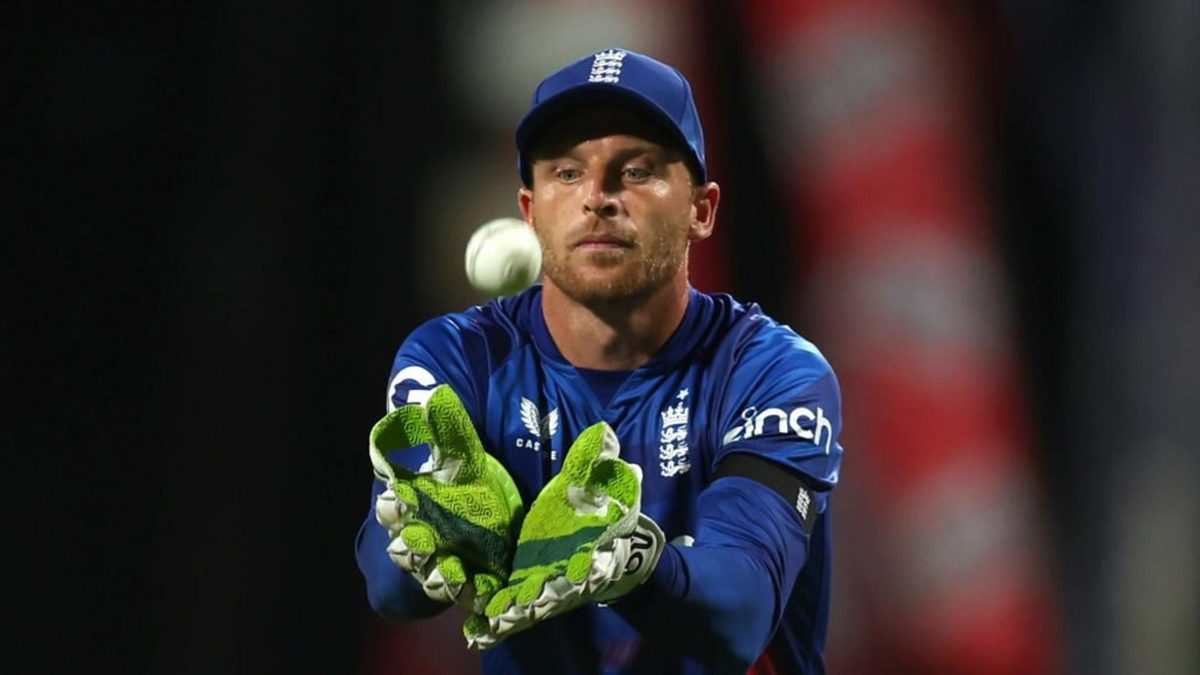
England’s post-World Cup reconfiguration started unconvincingly with a 2-1 defeat to an understrength West Indies side that failed to get through this year’s World Cup Qualifier.
With only six players retained from England’s miserable World Cup campaign, this was an opportunity for the next generation of English white-ball talent to put forward firm claims for inclusion in the build-up to the 2027 World Cup.
Here’s how the 12 England players fared over the course of the series.
Phil Salt: 4/10
70 runs @ 23.33; SR: 142.85
As his numbers suggest, there was no discernible difference between Salt’s method here and how he negotiates T20 cricket. Salt failed to make it out of the opening powerplay in any of the three games this series and has now gone 12 ODIs in a row without facing more than 30 deliveries. England want to go hard from the get go but wicket retention is still a crucial component of ODI innings building – Salt is capable of offering more.
Will Jacks: 7/10
116 runs @ 38.66; SR: 100
Three wickets @ 16.33; ER: 4.45
A steady series but still somewhat of a missed opportunity for Jacks who is in high demand from T20 leagues around the world. He played well in the second ODI, adjusting his tempo after losing wickets at the other end. Curiously unbowled in the first ODI, Jacks was superb with the ball in the third taking 3-22 from his seven overs.
Zak Crawley: 3/10
51 runs @ 17; SR: 67.10
A poor series for Crawley who never really found a rhythm at the crease. He struggled to rotate the strike against spin and fell early in his sole opportunity against the brand new ball. His success in the 2023 Ashes largely came largely against a Lyon-lite Australia attack; there are still question marks against his ability to first survive and then thrive against high quality tweakers.
Ben Duckett: 5/10
94 runs @ 31.33; SR: 91.26
Twice Duckett fell while playing his usually fruitful sweep, where he was perhaps undone by the inconsistent pace and bounce of the pitches used in Antigua. His 71 in Barbados was comfortably England’s standout innings of the day, but his demise – the sixth wicket to fall with 15 overs remaining – put the brakes on the England comeback.
Harry Brook: 7/10
115 runs @ 57.50; SR: 92.74
Brook was noticeably more measured compared to his approach compared to his efforts at the World Cup. He batted with responsibility yet was managed to score quickly – he’ll surely be central to England’s 2027 World Cup plans.
Jos Buttler: 4/10
61 runs @ 30.50; SR: 103.38
Two low scores and a fluent half-century; an improvement on his recent form but still some way off his best. Depending on how next year’s T20 World Cup goes, this was possibly Buttler’s final series as ODI captain and it’s hard to say that he did much to advance his case to retain his role. His mismanagement of England’s options meant that the expensive Carse and Curran had to bowl out in the opener.
Liam Livingstone: 5/10
62 runs @ 31; SR: 82.66
Four wickets @ 27.75; ER: 5.55
A weird series for a perplexing cricketer. Livingstone bowled superbly in the first two ODIs, getting through 10 overs unscathed in the series opener before making three crucial breakthroughs in England’s sole win. Carded at seven with the bat, his entry points – at overs 34 and 10 – were earlier than ideal but he still batted with an abandon that felt at odds with the match scenarios he encountered. In Barbados in particular, as well as he did to rebuild the innings, he was fortunate to survive a pair of wild hoicks even before he mistimed a ball to mid-on with 13 overs remaining and just three tailenders to follow him in the order
Sam Curran: 5/10
50 runs @ 25; SR: 104.16
Three wickets @ 51; ER: 7.34
Curran recorded England’s most expensive ever figures in an ODI in their opening defeat in Antigua before bouncing back to take three new balls games in the following fixture at the same venue. Like at the start of the World Cup, Curran was entrusted with the new ball. It’s a role that gives Curran the best chance of bowling out his 10 overs, something he has to do if he’s batting no higher than eight. But as alluring as his lower-order hitting and death bowling is, is he a threatening enough new-ball entity? Over the three ODIs, despite his early flurry of wickets in the second ODI, he didn’t quite convince.
Brydon Carse: 4/10
31 runs; SR: 147.61
One wicket @ 107; ER: 7.13
Carse put on crucial lower-order runs with Curran to take England to a competitive total in the first ODI but failed to lay down a marker with the ball, though he did bowl slightly better than his numbers suggest.
Rehan Ahmed: 8/10
Five wickets @ 23.40; ER: 4.33
An extremely encouraging series for the teenaged wrist-spinner who has come on leaps and bounds in his first year as an international cricketer. His leg-break is a much more potent weapon than it was 12 months ago and it makes his wrong-un, which is now used more sparingly, more dangerous.
Gus Atkinson: 6/10
Six wickets @ 24.66; ER: 6.52
England’s most consistent wicket-taking threat though there were still moments where his lines and lengths went awry, most notably at the death against Romario Shepherd in the third ODI.
Matt Potts: 5/10
No wickets; ER: 5.00
Potts came into the side for the series decider and didn’t take a wicket from his three overs.








